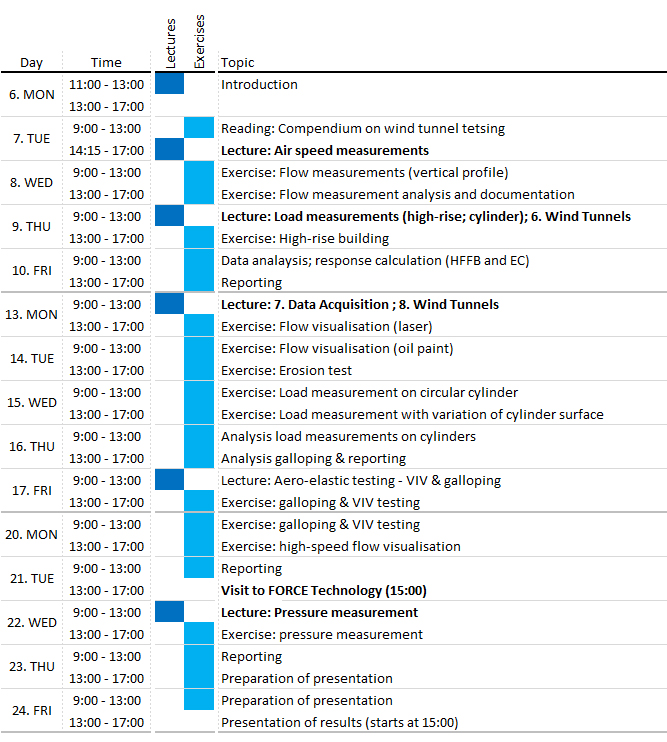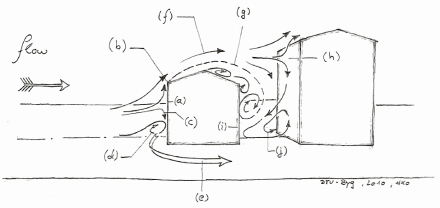Special Course & Preparatorial Education
Course Responsible:
Holger H. Koss
Schedule
Individual lectures on introduction to wind tunnel testing have been given frequently as preparation for wind tunnels studies. In January 2016 the introduction to wind tunnel testing will be given in form of a special course for students on Master and PhD-level. Detailed time schedule will be issued in due time. The introduction meeting will be on January 4 at 11:00 a.m. at the Closed-Circuit Wind Tunnel in building 119.
General Specifications
5 ECTS points ; Teaching Language: English (Danish on request) ; Maximum number of participants: 10 ; IMPORTANT: all students must have passed the safety introduction to be allowed working in DTU-Byg's laboratories. The introduction video and quiz is available online in Portalen (here).
Course Material
Course book "Introduction to Wind Tunnel Testing in Civil Engineering", lecture slides and additional material for the individual exercises (all material provided in English).
Course Objectives and Background
The overall course objective is to acquire theoretical and practical knowledge on how to perform and analyse wind tunnel tests related to civil engineering. The course consists of lectures and practical exercises. The lectures topics are: aerodynamic investigation of civil engineering structures in a wind tunnel such as fluid dynamics, principles of wind tunnels, scaling issues, test purpose and setups, model building and instrumentation, data sampling and signal anaylsis and overview over typical test types. The practical exercises in form of wind tunnel tests focus on preparation, performance, observation and measurements, data analysis and reporting. The wind tunnel tests will take place in the small Closed-Circuit Wind Tunnel in building 119 on DTU campus and in the collaborative Climatic Wind Tunnel at FORCE Technology (Hjortkærsvej 99). Following topics for the exercises are under consideration:
-
Measurement of turbulent flow (mean velocity profile, turbulence intensity and spectral density function).
-
Measurement of base moments and forces on a scaled high-rise building (load spectrum and scaling issues).
-
Surface pressures on a building model (depending on the availability of high-speed pressure scanning system).
-
Visualisation of airflow around a body.
-
Aeroelastic tests on a cable or bridge section.
The topics may change depending on the availability of measuring equipment and facilities. Details regarding content of lectures and exercises will be decided on in the first week of January. The preliminary time schedule for lectures and exercises in January 2016 is given below (changes will be published on this website):

Course time schedule for January 2016.
A typical example for a visualisation study on airflow around buildings with analysis through graphical documentation is shown below. The study was performed in the closed-circuit wind tunnel at DTU Civil Engineering.

Figure 1: Interpretation of flow regimes based on flow visualisation - (a) stagnation
point on wind ward side;(b) separation at leading edge; (c) downwash; (d) base vortex,
developing into (e) horshoe vortex; (f) outer flow displaced above building;
(g) separation bubble with internal vortex sub-structure; (h) stagnation
on downwind building; (i) reattachment of wake circulation between buildings
on rear side of upstream building; (j) base vortex of downstream building.
Figure 2: First trials in flow visualisation in connection with introduction lecture.
Contact:
Holger H. Koss
Associate Professor at DTU Civil Engineering
hko@byg.dtu.dk